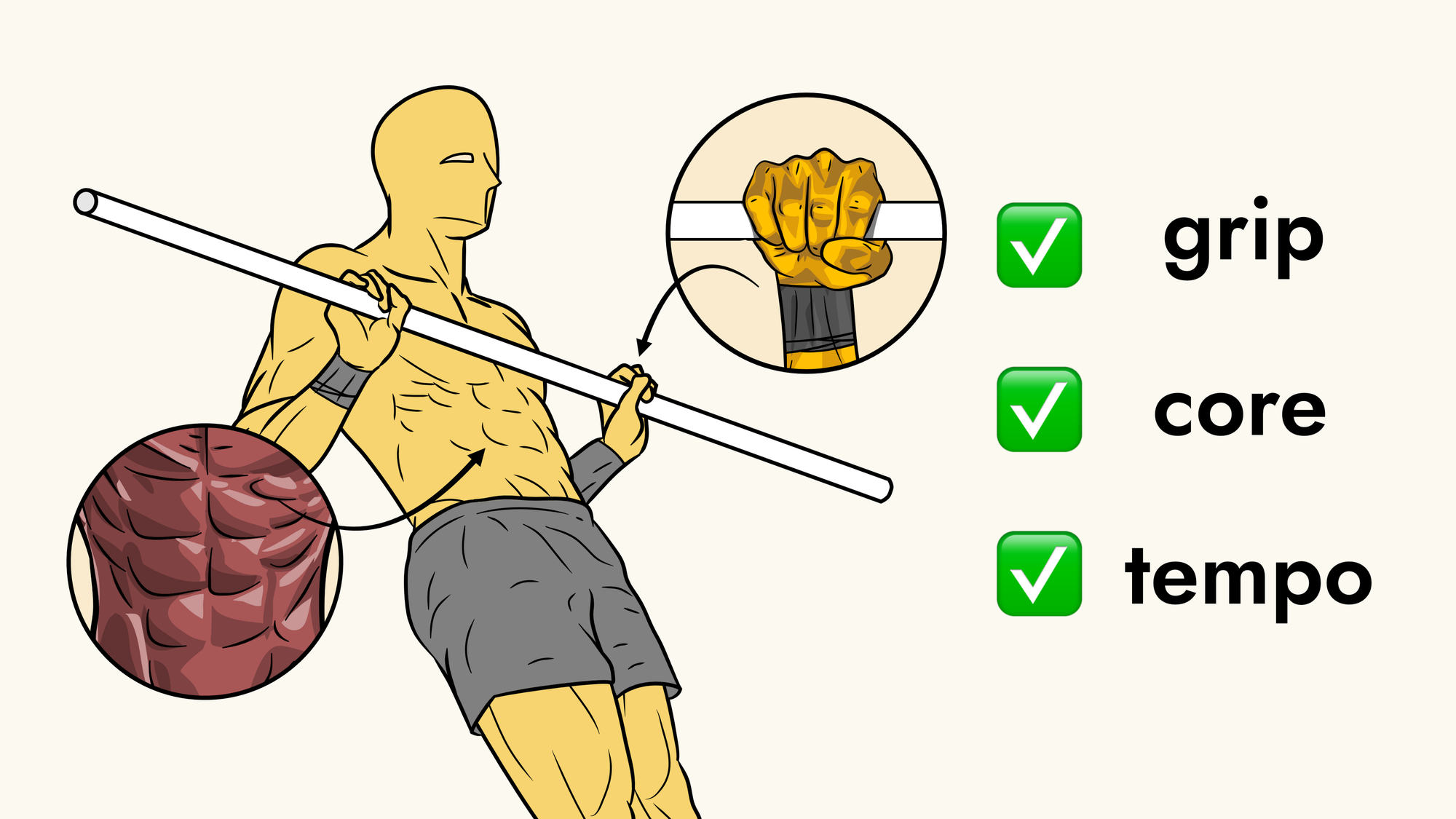

· By Angie Mok
How to do push-ups correctly
Master proper push-up form by engaging your core, keeping alignment, and maintaining full range of motion.
Learn three key variations: standard, sphinx, and pseudo planche which target different muscles.
Fix common mistakes of push-ups
Table of contents
Why form matters in push-ups
The push-up is one of the most effective and timeless bodyweight exercises for building total-body strength. By engaging your chest, arms, shoulders, core, and even your legs, push-ups deliver a complete workout without the need for equipment. Mastering proper form to keep your body in a straight line and activating your core. This is the key to maximizing results and preventing injury. Whether you’re a beginner or a fitness enthusiast, understanding the fundamentals of push-ups sets the foundation for progressing to more advanced variations.
Core positioning for perfect push-ups
A strong core is the foundation of every effective push-up. Engaging your abs, glutes, and hips keeps your body stable and aligned, preventing sagging or arching through the lower back.
To activate your core properly, tighten your midsection, tilt your pelvis slightly, and maintain a straight line from your head to your heels. This engagement not only improves form and balance but also maximizes muscle activation, helping you build strength in your abs and lower back while protecting your spine from unnecessary strain.

Leg positioning for better push-up performance
Your legs play a crucial role in maintaining full-body tension during push-ups. Keep them fully extended and close together to create a stable base that supports your upper body movement. Engaging your glutes and quads helps you hold a neutral position, preventing your hips from lifting or dropping as you push up and down.
By focusing on proper leg alignment, you’ll enhance your overall control, increase stability, and improve the efficiency of each repetition to make every push-up count toward better strength and endurance.

If you’re serious about building strength with bodyweight training, check out our Calisthenics Playbook. It’s a detailed guide that covers the three core movements every athlete should master pull-ups, push-ups, and squats along with progressions for all levels.It gives you a clear roadmap to follow without the guesswork.
3 push-up variations to take your workout next level
Discover three challenging push-up variations designed to boost your strength, stability, and upper body control.
- Standard push-up
- Diamond push-up
- Archer push-up
Standard push-up
The standard push-up, which uses your core for stability, strengthens your triceps, shoulders, and chest.
Place your hands on the floor at a 45-degree angle, exactly in line with your shoulders, to do it correctly. Breathe in as you lower your chest toward the floor, exhale as you push back up, and maintain a straight body.
This easy yet effective exercise is essential to any fitness program because it enhances posture, strength, and upper body endurance.

Diamond push-up
The diamond push-up is an excellent variation for strengthening your core and triceps. Start by placing your hands in a diamond shape. Start with a high plank, defining your arms and lining up your shoulders over your wrists. It is possible for elbow creases to be slightly inward-facing.
Reduce until the hands almost touch the chest. Push back up with strength, pushing your chest away from your hands. The triceps should be the primary driver.

Archer push-up
Archer push-up is about stretching one arm out to the side while keeping the other at chest level is a more difficult variation. This exercise, which resembles an archer drawing a bow, strengthens just one side of your body.
The archer push-up emphasizes one side, which highlights the significance of balanced strength. In addition to helping muscles grow evenly, this push-up can correct uneven muscles.
Let's start. With your elbows straight and your fingers pointing outward, begin as though you were performing a wide push-up. As in a standard push-up, sink on one arm's side while extending the other.
While the extended arm barely touches the floor (or does not), the chest remains close to the ground. Most weight is supported by the bent arm.
The stretched arm helps with balance, while the bent arm's tricep and chest should provide the majority of the force. For one arm, this is one repetition.

3 common push-up mistakes (and how to fix them)
Even if you’re training hard, these 3 mistakes might be holding you back.
- Avoid flaring elbows
- Perform halfway
- Not engaging scapula
Mistake #1: Avoid flaring your elbows
One of the most common push-up mistakes is allowing your elbows to flare out to the sides. This position places unnecessary strain on your shoulders and reduces the effectiveness of the movement. To protect your joints and build strength safely, keep your elbows tucked at about a 45-degree angle from your body. This form engages your chest, triceps, and shoulders more evenly, improving both performance and muscle activation over time.

Mistake #2: Perform half push-ups
Half push-ups without completing the entire range of motion are another common mistake. You run the risk of creating imbalances and limiting muscle engagement when you don't fully lower your body or skip the lockout at the top. Lower your chest near the floor and fully extend your elbows at the top of your push-ups to maximize their effectiveness. This full, controlled motion increases functional strength, endurance, and muscle growth.
Mistake #3: Forget to engage your scapula
Ignoring your scapular, or shoulder blade, movement is a common push-up error. Your shoulders become unstable when your scapula is not properly engaged, which raises the possibility of strain and lessens the exercise's effectiveness. To fix this, concentrate on protracting your shoulder blades during push-ups and retracting them during lower body movements. Your overall push-up performance is improved, your posture is improved, and your shoulders are strengthened by this deliberate movement.




